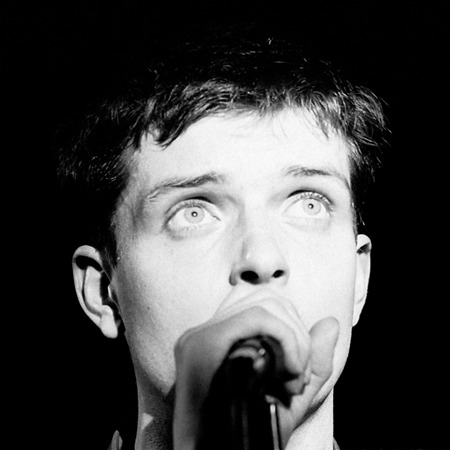Can the cinematic depictions of the character Hannibal Lecter be perceived as auteuristic?
Films
Item 1: Silence of The Lambs (1991) This is the second film of the series based on the 4 novels written by Thomas Harris. In this film, Hannibal Lecter (played by Anthony Hopkins) is shown as a prisoner throughout the majority of the film as opposed to 'Hannibal' (2001) which is set after his escape from captivity. Because of this, it allows the audience to observe the nature of this character and learn certain aspects of his personality. He is first introduced in this film behind his glass prison cell, as he is questioned by the rookie FBI agent Clarice Starling (played by Jodie Foster). This is the perfect film to choose as my focus film as he is behind glass throughout the film allowing me to study this character thoroughly.
Item 2: Hannibal (2001) This is the second film of my three, I chose this for my second focus film as it is the next film in the series and is a development from 'The Silence of The Lambs' in regards to the relationship between Hannibal and Agent Starling as well as a development in Hannibal's personality. In this film he is not in captivity which leads him to committing acts that reveal his true psychotic self, at the same time as maintaining his well mannered respectful and sophisticated nature.
Item 3: Manhunter (1986) This is the first film to be made and on the first novel (Red Dragon) which was later re-made into the film Red Dragon. In this film Hannibal Lecter is played by Brian Cox as revealed that he based his performance on a well known serial killer Peter Manuel. It is because of this fact that I have decided to use this film as one of my focus films as it will allow me to discuss and argue whether the cinematic depictions of the character Hannibal Lecter be perceived as auteuristic or whether it is down to individual actors adapting the role of Hannibal Lecter.
Articles
Item 4: "Who plays Hannibal Lecter the best?"
http://www.charactergrades.com/exclusives/dr-hannibal-lecter-who-plays-him-best
This is very helpful as it allows me to discuss and gain an insight into how this character is played by other actors.
Item 5: "Why Hannibal continues to charm and haunt us"
http://www.theglobeandmail.com/arts/television/why-hannibal-lecter-continues-to-charm-and-haunt-us/article10736070/ This is an article about the character of Hannibal Lecter and why it is that people still are appealed by his character. This is useful as it explains to me why it is that people are still intrigued yet 'haunted' by this character.
Item 6:"The Birth of a Killer"
http://philosophypress.co.uk/?p=770
Item 7: Article giving a brief overview of Hannibal Lecter throughout each film. It also states about how each actor takes on the role of Hannibal. I am using this as I believe it will give me good topics to argue on my question, such as Brian Cox basing his performance on an already known serial killer Peter Manuel. This is very useful as it will allow me to argue whether Hannibal Lecter is an auteur character is he changed and altered in relation to the actor.
http://en.wikipedia.org/wiki/Hannibal_Lecter#In_film
Item 8: "Hannibal Lecter is a feminist"
http://timothystanley.co.uk/1/post/2013/01/hannibal-lecter-is-a-feminist.html
Videos
Item 9:
http://www.youtube.com/watch?v=WoR2ymL6J50
Gaspard Ulliel discussing taking on the role of Hannibal Lecter in the film Hannibal Rising. I am using this as it gives an in depth discussion of how Gaspard takes on the role of Hannibal as he plays a younger version of the Hannibal we see played by Anthony Hopkins. I feel that this is very useful as it is primary evidence from actors talking about how Hannibal,as a character, is constant but also tweaked slightly in relation to the actor. Gaspard talks about analysing Anthony Hopkins as Hannibal and learning certain mannerisms and movements, as well as adding his own personal touch to the character. This allows me to argue whether Hannibal Lecter is an auteur character or not. Does it still count if the character is portrayed at different age all together?
http://www.youtube.com/watch?v=WoR2ymL6J50
Item 10: Mads Mikkelsen talking about the adaptation of the character Hannibal Lecter as he undertakes the role for the TV Series Hannibal. Stating that it is set in a time before Hannibal is capture he says that this gave him a chance to do something different with the character. I am using this as a clear and strong point to argue whether time periods change the actors ability to alter the character of Hannibal Lecter. For example if Hannibal is to be played at time younger than in previous films (Silence of the Lambs) does it mean that this character has not yet developed into what was played by Anthony Hopkins?
http://www.youtube.com/watch?v=OmLRRLRhZU0
Item 11: Gaspard Ulliel talking again about undertaking the role of Hannibal and the freedom he had with it. He goes into detail about picking and choosing certain aspects of Anthony Hopkins performance but the majority of his acting was inspired by reading books about similar serial killers which became helpful to him. This is useful as it is a strong point to state when arguing whether Hannibal is an auteur character as cases where the actor has change, so has subtleties in the performance of Hannibal Lecter.
Rejected Items
Item 12: Hannibal Lecter: Orgin, Facts and Fiction' I decided that this item should be rejected as despite being very insightful on the character of Hannibal Lecter, it is strongly based on the Thomas Harris novels as opposed to my focus films therefore I cannot use this information to strengthen my argument as I am questioning the performance of Hannibal within the films.
http://www.crimelibrary.com/serial_killers/weird/lecter/1.html
Item 13:
http://voices.yahoo.com/the-evolution-hannibal-lecter-149249.html?cat=38
Item 14:
http://www.denofgeek.us/movies/hannibal-lecter/140360/hannibal-lecter-a-character-retrospective





